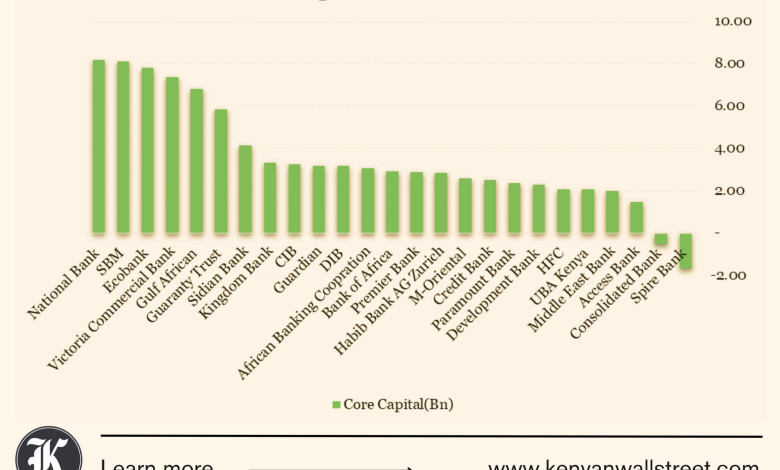Higher Capital Limits Put 25 Banks on Edge

25 licensed Kenyan commercial banks, more than half of the 39 licensed commercial banks, will have up to three years to raise their core capital to the new KShs. 10bn once CBK raises the threshold.
In June, Treasury presented a plan to increase the minimum capital requirement for banks tenfold from the current KSh 1 billion to KSh 10 billion.The move is aimed at bolstering banks’ resilience and to anchor the country’s financial sector, in a bid to build stronger banks with more muscle to finance bigger projects.Kenya last raised its core capital requirements in 2012, and an attempt to raise it (to KShs. 5bn) was shot down in Parliament in 2015.“We have not adjusted the core capital requirements in many years, and during that time, we have had all kinds of new risks emerging such as cyber-security and climate issues. There is also competition from foreign banks coming here and becoming very aggressive. As we plan to become a financial hub, we need strong banks that can withstand new risks,” The CBK Governor Dr. Kamau Thugge said in a recent interview.
Capital broadly acts as a buffer for a bank and provides a financial safety net to protect depositors and the economy from possible bank failures. It allows a banking institution to continue operating even in periods of unforeseeable losses prolonging insolvency, ensuring the liquidity crisis is forfeit by the owners rather than the public safety net provided by the apex bank.
This proposal presents grounds for mergers and acquisitions in the banking sector while some banks might be forced to seek downgrades to their licenses. In March, after Uganda raised its core capital requirements to KShs. 5bn (~$40mn), three banks had their licenses downgraded from Tier I commercial banks to Tier II credit institutions.
A similar situation might play out in Kenya for banks that do not want to seek strategic investments or mergers. Some banks that are subsidiaries of larger lenders, such as Kingdom Bank (Co-Op’s subsidiary), SBM Bank (Kenya) Ltd (SBM Group subsidiary), and CIB Kenya (CIB Group subsidiary) will need substantial capital injections to survive.
Others such as Access Bank might merge their subsidiaries-Access Bank Kenya and the soon-to-be-acquired National Bank-to achieve their capital targets.
“Mergers and acquisitions will be encouraged but we will allow it to play out within the banks. Unless we are asked to intermediate, I really don’t see the need for forcing mergers outside of setting the target for core capital,” Thugge added.
In July, Stanbic Bank Kenya CEO Joshua Oigara predicted that raising the threshold would likely halve the number of commercial banks in the sector. It’ll also favour big players, as the eight listed banks currently control 80% of the banking sector. The evolution of the sector will result in a few big players with substantial financial muscle, and likely trigger growth in the Microfinance banking sector as smaller banks fold.
In 2023, the banking sector witnessed six consolidations where four commercial banks and two microfinance banks were either partially or wholly acquired, as the regulator kicks off plans to raise capital requirements for the sector.
The sector’s total capital adequacy ratio stood at 18.6 percent in December 2023 above the minimum ratio of 14.5 percent. Similarly, the sector’s liquidity ratio remained above the statutory minimum level of 20 percent, averaging 51.0 percent.
ADVERTISEMENT



